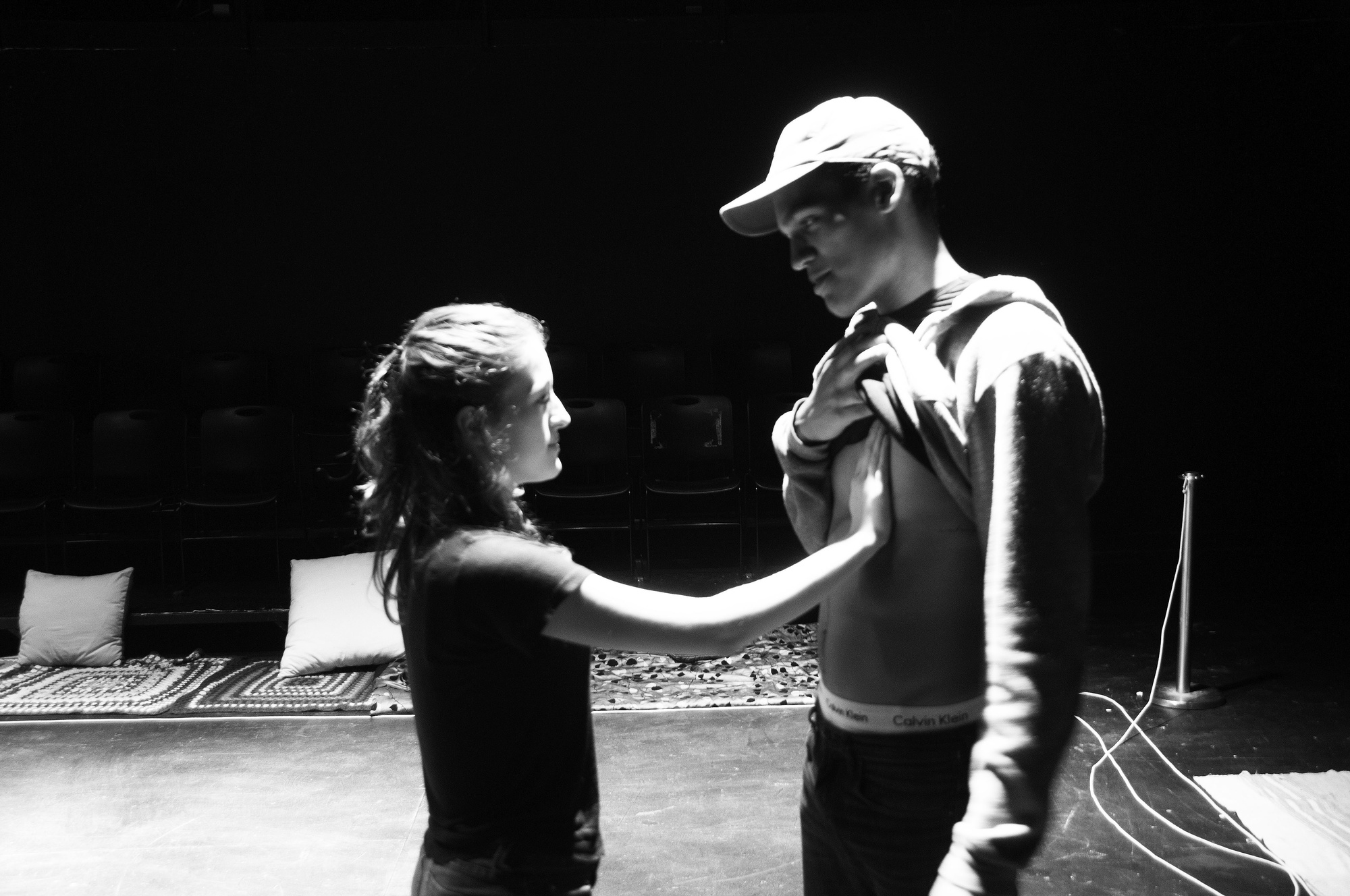
News
Pro-Palestine Encampment Represents First Major Test for Harvard President Alan Garber

News
Israeli PM Benjamin Netanyahu Condemns Antisemitism at U.S. Colleges Amid Encampment at Harvard

News
‘A Joke’: Nikole Hannah-Jones Says Harvard Should Spend More on Legacy of Slavery Initiative

News
Massachusetts ACLU Demands Harvard Reinstate PSC in Letter

News
LIVE UPDATES: Pro-Palestine Protesters Begin Encampment in Harvard Yard
Brilliant 'Moon'

“Imagine this moment were real,” says Leila, the young girl standing in the middle of the stage who has been trying to retell her story. It’s the middle of a production of David Greig’s chilling play“Yellow Moon,” and up until this point, you had been sure that every previous scene was indeed real—or, at least real in the context of the play’s narrative. But the production of the play directed by Susanna B. Wolk ’14, which ran through Saturday in the Loeb Ex, challenged the very notion that the audience can trust the narrators on stage.
What started out as a seemingly linear narrative—teenage Leila (Juliana N. Sass ’17) meets delinquent Lee (Eli W. Pelton ’16) and they run away after Lee commits accidental murder—quickly became a whirl of mistaken memory, jumbled time and place, and completely imagined scenes, all delivered with surprising coherence and impressive fluidity.
The play began quietly and simply, with Leila crouched center stage, scrawling the title of her story, “The Ballad of Leila and Lee,” with chalk on the floor. The set design likewise was simple: characters mimed various props, with only two boxes onstage and pillows scattered on four sides of the black box theater for the audience to make itself comfortable. The perimeter in which the story unfolded was outlined in a long white rope, its end winding to the center of the stage where it meandered to a halt in the middle of Leila’s handwritten title. Wolk’s inspired staging had the actors interacting with this rope, using it as the outline of a car, a doorway, and even a dead deer. The lighting by Madeleine F. Bersin ’14 was incredibly effective in heightening the intensity of the story—actors used flashlights in the dark theater and spotlights arranged at the diagonal corners of the performance space to illuminate each other during monologues and particularly powerful scenes. As the story progressed and Leila’s life became more entangled with Lee’s fugitive existence, both characters began to play out scenes that never actually occurred, each attempting to correct or rewrite parts of their history that were painful to remember.
To complicate matters, it was not just the two protagonists who jumbled the narrative—actors Brenna K. McDuffie ’15 and Justin S. Pereira ’13, each playing roles as parents of the two teens and other adult figures, played with the progression of events as well. When characters narrate the events, years, months, and time often changed, leaving characters untethered to any time or space. But there is a lyrical quality to the narration so that at times each actor seems to be an instrument in a larger musical score. The characters often tag-team the narration, trading off lines in an impressively choreographed verbal dance. Leila and Lee in particular repeat a shared line whenever they need to be reassured: “Alright. Maybe. Everything will be alright.” When the two travel north on a train, they narrate themselves in third person, speaking in singsong voices as though retelling a fairy tale.
But their story is anything but fairy-like; the themes that thread through the play are serious and add an element of urgency to each character’s self-discovery. “Silent” Leila, as she is dubbed, has a compulsion to cut herself in order to feel like she’s real. Sass, as Leila, delivered her lines with an appropriate flat affect and held herself almost apologetically on the stage, as though she were repentant for being alive. Her skill in portraying a deeply troubled and introverted character was a perfect paradox to Pelton’s bravado as Lee, pompously over-sexualized and yet painfully innocent when he finds himself the murderer of his stepfather. Lee leads Leila haphazardly into the snowy mountains of Scotland where they encounter a frightening “drunk” Frank (Pereira) and Holly (McDuffie), a figment of Leila’s imagination. Each actor brought incredible energy to the narrative, and their chemistry during quiet scenes—sometimes conducted with only the beam of a flashlight to illuminate their faces—almost crackled with authenticity. The incredibly solid and realistic portrayal of the characters made Wolk’s vision even more intriguing. If the director intended the audience to question the reality of every scene, the actors’ honest and emotional performances made it challenging to let go of their apparent reality.
Leila frantically scribbles their tale in chalk on the floor whenever she has time, and in the climactic scene, the other characters erase her words, challenging her version of events. In fact, every character’s existence is so fragile that they, as narrators, are apt to discard their own reality in a few words, as easily as chalk dust is rubbed off the black floor. By the end of the production, Wolk managed both to tell a captivating tale of two teens on the run and to pose a fundamental question about the creation of narrative.
—Staff writer Virginia R. Marshall can be reached at virginia.marshall@thecrimson.com.
Want to keep up with breaking news? Subscribe to our email newsletter.
